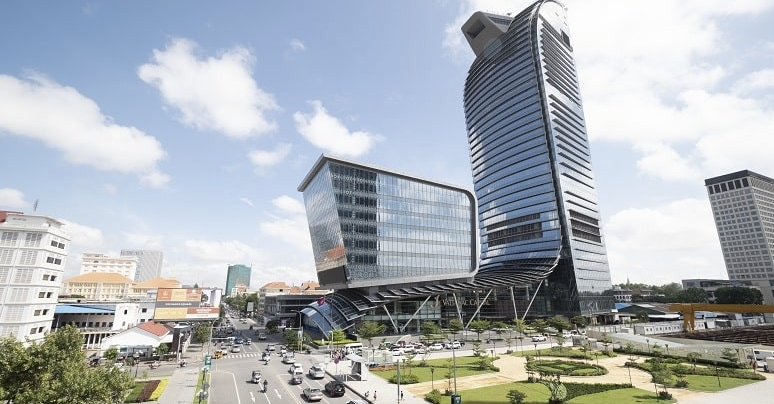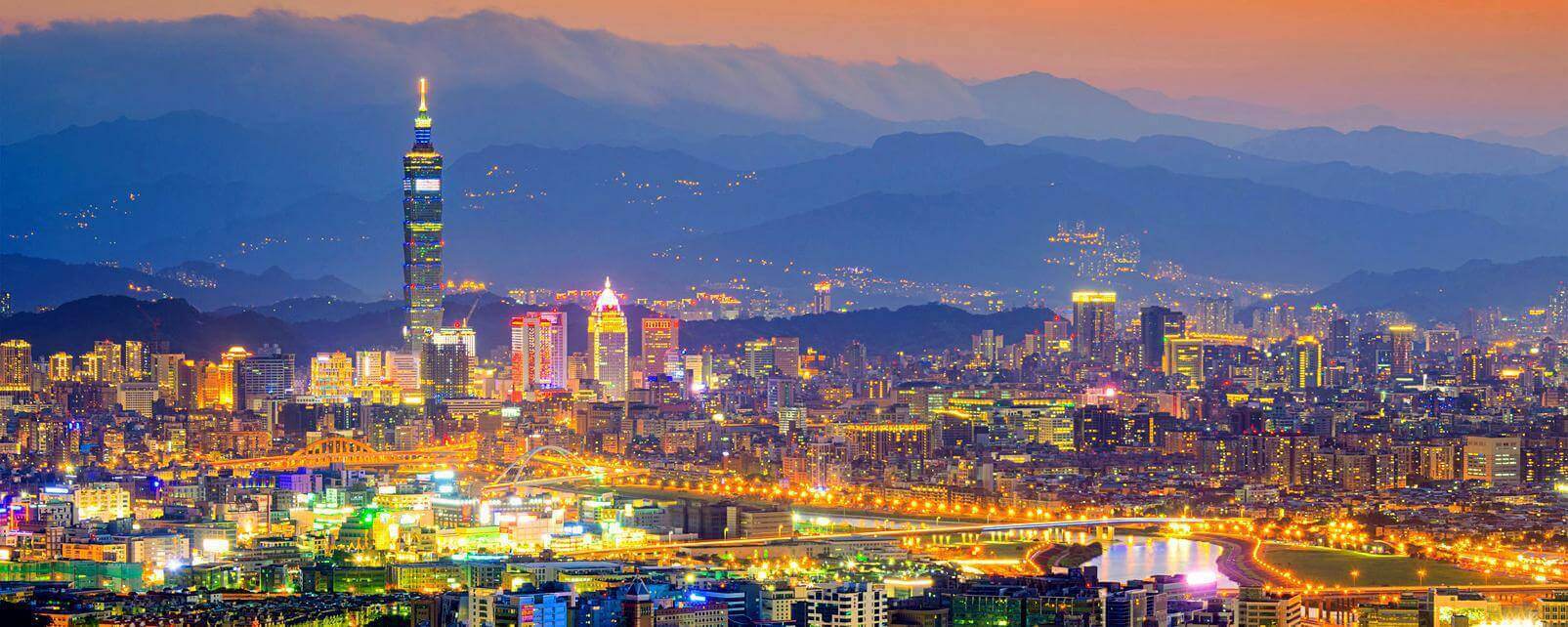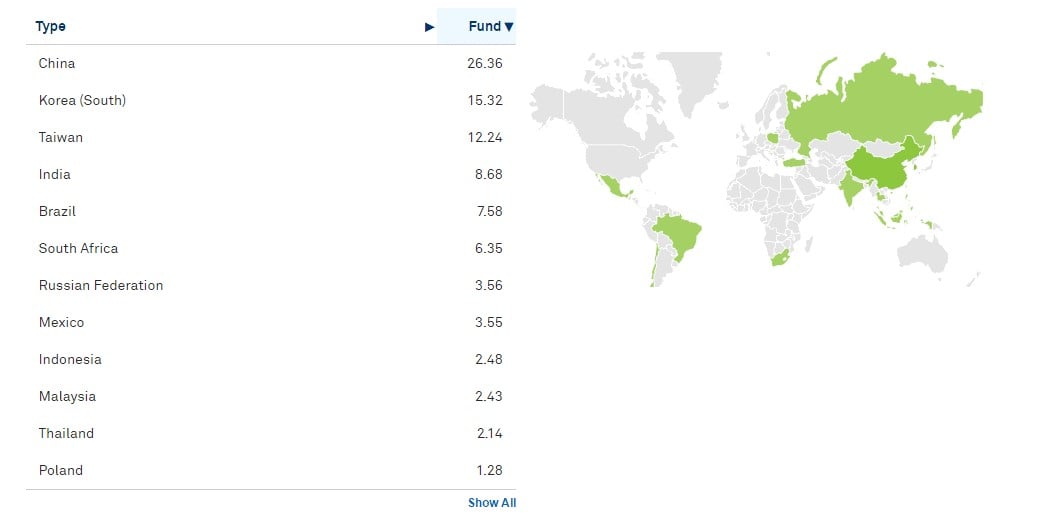Best Areas in Phnom Penh to Buy Property

Are you looking to invest in Phnom Penh’s dynamic property market?
As Cambodia’s bustling capital undergoes rapid urbanization and economic growth, savvy investors are taking note of the exciting opportunities in this high-potential frontier market.
With its vibrant street life, stunning architecture, and growing expat community, Phnom Penh offers a compelling mix of affordability, livability, and investment potential. But with so many neighborhoods to choose from, where should you focus your property search?
In this article, we’ll explore the top four districts for buying condos and apartments in Phnom Penh: Daun Penh, Chamkar Mon, 7 Makara, and Boeng Keng Kang (BKK).
Whether you’re seeking a centrally-located pad in the heart of the business district or an up-and-coming area with room for growth, these neighborhoods offer some of the best prospects for investors in the Cambodian capital.
Daun Penh – The Central Business District
At the top of our list is Daun Penh, Phnom Penh’s primary central business district (CBD) and commercial hub. This bustling neighborhood is home to key landmarks like the Central Market, numerous government offices, and the historic riverside area.
Daun Penh’s strategic location and growing skyline make it a top pick for long-term growth and appreciation. The district’s focal point, Street 110, is lined with gleaming office towers and luxury condos, with even more high-rises under construction.
As Phnom Penh continues to attract international businesses and investors, demand for prime real estate in the CBD is expected to soar.
However, this prime location comes with a premium price tag. Daun Penh boasts some of the highest property prices in Cambodia, especially along the coveted riverside.
You should expect to pay at least $70,000 for a small one-bedroom condo here, with prices rising sharply as you approach Sisowath Quay.
Another challenge in Daun Penh is the limited supply of residential properties, as the district is dominated by commercial and retail developments.
This scarcity, combined with strong demand from wealthy locals and expats, means that investors need to act fast and be prepared to pay top dollar for the right property.
For those willing to take on these challenges, Daun Penh offers unbeatable potential for capital appreciation and rental yields.
Look for well-located condos or apartments with good amenities and transport links. While entry prices may be steep, the long-term rewards of investing in Phnom Penh’s CBD are likely to be substantial.
Chamkar Mon – The Upscale Residential Haven
Next up is Chamkar Mon, an affluent residential district that is home to some of Phnom Penh’s most desirable neighborhoods, including BKK1.
With its leafy streets, upscale restaurants, and international schools, Chamkar Mon is a magnet for wealthy locals and expats seeking a high-quality lifestyle.
The district’s crown jewel is undoubtedly BKK1, a trendy enclave known for its hip cafes, boutiques, and luxury apartments. This neighborhood has become the go-to choice for Phnom Penh’s expat community, driving up property prices and rental demand.

Daun Penh is the business center of Phnom Penh, filled with local traditional shophouses, government offices, and business complexes. Property prices in the neighborhood are set to rise higher each year.
However, BKK1’s popularity has also led to an oversupply of condos in recent years, making it a less attractive option for investors compared to other parts of Chamkar Mon.
Savvy buyers may want to look at neighboring areas like Tonle Bassac or Olympic, which offer a similar upscale vibe at slightly lower prices.
One key advantage of investing in Chamkar Mon is the district’s large supply of high-quality apartments and condos, catering to a range of budgets and preferences. Whether you’re seeking a compact studio or a spacious family unit, you’ll find a suitable property here.
Another plus is Chamkar Mon’s excellent infrastructure, including international hospitals, shopping malls, and parks. This makes the district a safe and convenient choice for long-term residents, ensuring a stable rental market and potential for capital appreciation.
When investing in Chamkar Mon, look for well-maintained properties in secure buildings with good facilities.
7 Makara – The Up-and-Coming Hotspot
For investors seeking an affordable entry point with strong growth potential, 7 Makara is an exciting option.
This up-and-coming district, located just west of central Phnom Penh, is undergoing rapid development and transformation.
While 7 Makara may lack the glitz and glamor of more established areas like Daun Penh or BKK1, it offers a compelling mix of affordability, livability, and long-term appreciation potential. The district’s lower land costs and ample supply of new condo developments make it an attractive choice for budget-conscious investors.
Despite its lower prices, 7 Makara is far from a backwater.
The district is already home to international brands like Burger King, and developers are increasingly eyeing it for new projects. Many locals believe that 7 Makara will be part of the city center by the end of the decade, driving up property values and rental demand.
One key advantage of investing in 7 Makara is the potential for capital appreciation as the district develops and gentrifies.
As more businesses and amenities move into Cambodia, property prices are likely to rise, rewarding early investors who got in at the ground floor.
Another plus is 7 Makara’s growing expat community, attracted by the district’s affordable rents and proximity to the city center. This trend is likely to continue as more foreigners discover the hidden charms of this up-and-coming area.

A mixed of high-rise residences, houses, and apartments above shophouses can be found all over Phnom Penh. With the expansion of the city, demand for solid residential property keeps growing.
When investing in 7 Makara, look for well-constructed condos in newer developments with good security and management.
While the district may not have the same level of amenities as more central areas, its lower prices and strong growth potential make it a smart choice for long-term investors.
Boeng Keng Kang (BKK) – The Expat Enclave
Last but not least, we have Boeng Keng Kang (BKK), a popular residential area that is often divided into three sub-districts: BKK1, BKK2, and BKK3.
Of these, BKK1 is the most well-known and sought-after, thanks to its trendy cafes, international restaurants, and luxury apartments.
BKK1’s popularity with expats has made it one of the most expensive areas to buy a condo in Phnom Penh, with prices rivaling those in Daun Penh’s riverside.
The neighborhood’s limited land supply and high demand have also led to an oversupply of condos in recent years, making it a less attractive option for investors compared to other parts of the city.
However, BKK2 and BKK3 offer a more affordable alternative for those seeking a slice of the expat lifestyle. These sub-districts have a similar vibe to BKK1 but with lower prices and more room for growth.
They are also popular with young professionals and families living in Cambodia, ensuring a diverse and stable rental market.
One key advantage of investing in BKK is the area’s excellent connectivity and amenities. The neighborhood is well-served by public transport, including tuk-tuks and motorbike taxis, and is home to a range of international schools, hospitals, and shopping centers.
Another plus is BKK’s large expat community, which provides a ready pool of potential tenants and buyers for investors.
Many foreigners are drawn to the area’s cosmopolitan vibe and convenient location, making it a relatively low-risk choice for those seeking a stable rental income.
When investing in BKK, look for well-maintained properties in newer buildings with good security and facilities.
While prices may be higher than in other parts of Phnom Penh, the area’s enduring popularity with expats and growing local middle class make it a solid choice for long-term capital appreciation.
Top Neighborhoods in Phnom Penh
Phnom Penh’s property market offers a wealth of opportunities for investors, from the bustling streets of Daun Penh to the leafy avenues of Chamkar Mon.
Whether you’re seeking a prime location in the heart of the business district, a prestigious address in an upscale neighborhood, or an affordable option with strong growth potential, Phnom Penh has something to offer.
The key is to do your due diligence, work with reputable partners, and stay attuned to the city’s rapid development and changing dynamics.
One thing is almost certain though: Cambodia’s real estate market is poised for continued transformation in the years ahead.
FAQs: Locations to Invest in Phnom Penh
K
L
How Much Does Phnom Penh Real Estate Cost?
Property prices in Phnom Penh vary widely depending on the neighborhood and type of unit. In prime areas like Daun Penh’s riverside or BKK1, you should expect to pay at least $70,000 for a small one-bedroom condo.
However, in up-and-coming districts like 7 Makara, prices are significantly lower, with new condo developments offering affordable entry points for budget-conscious investors.
Overall, Phnom Penh real estate is competitively priced compared to other capital cities in the region. You can find centrally-located condos for around $1,000 per square meter, which is considered a “global floor” price. As Cambodia’s economy continues its rapid growth, these prices are likely to appreciate steadily in the years ahead.
K
L
Where is Phnom Penh’s Most Expensive Area?
Daun Penh, Phnom Penh’s central business district, commands some of the highest property prices in the city, especially along the coveted riverside area. The district’s prime location, growing skyline, and scarcity of residential properties have driven up costs, with investors needing to pay top dollar for the right unit.
BKK1, a trendy enclave known for its upscale restaurants and luxury apartments, is another contender for Phnom Penh’s priciest neighborhood. The area’s popularity with wealthy expats has led to prices rivaling those in Daun Penh, although an oversupply of condos in recent years has somewhat dampened its investment appeal.
K
L
What is the Cheapest Part of Phnom Penh?
The cheapest neighborhoods in Phnom Penh are those located in the far suburbs. The price per square meter in Chroy Changvar and Chbar Ampov, for example, are much less expensve than the city’s average.
Within the city center, 7 Makara district is an exciting option. This up-and-coming area, located just west of Daun Penh Phnom Penh, offers a compelling mix of low prices, livability, and appreciation potential.
K
L
Where is Phnom Penh’s City Center?
Phnom Penh’s city center is generally considered to encompass the Daun Penh, 7 Makara, Chamkar Mon, and BKK districts.
Daun Penh, the city’s commercial and administrative hub, is the city’s central business district (CBD). Home to key landmarks like the Central Market, government offices, and the historic riverside area. Many of Phnom Penh’s largest office towers and luxury condos are concentrated here.
K
L
How High Are Rental Yields in Phnom Penh?
Phnom Penh offers some of the most attractive rental yields in the region, with average returns around 6%. This is significantly higher than more developed markets like Bangkok or Kuala Lumpur, where yields have compressed to 3-4% in recent years.
The combination of affordable property prices and strong rental demand from a growing expat population makes Phnom Penh an appealing choice. However, yields can vary widely by neighborhood,
Why Buying an Emerging Markets ETF is a Bad Idea

Countless times, clients have told us they’re “already investing in emerging markets!” because they bought into a mass market ETF or mutual fund from Vanguard or iShares.
Don’t get us wrong: we aren’t saying these emerging market ETFs won’t go up in value over time or that you shouldn’t buy them.
But it’s worth addressing a common error that many people make when investing overseas.
See, most investors purchase shares in an emerging markets ETF, or a similar mutual fund, for two different reasons.
The first reason why people invest in emerging markets is simply to diversify their portfolio. Not having to rely on the performance of a single market or currency can limit your overall downside.
Meanwhile, the second reason is to achieve higher returns. Emerging markets are called such for a reason – they’re normally growing faster compared with developed economies and are, well, emerging.
Here’s the issue though: a typical emerging markets ETF or fund that your brokerage tries selling you won’t accomplish either of those things.
Quite frankly, you aren’t investing in emerging markets correctly if you’re doing it through an ETF or mutual fund.
Let’s explore the risks of emerging market ETFs, and uncover why these funds don’t invest emerging economies the right way.
You Aren’t Even Investing in Emerging Markets
A large percentage of stocks owned by emerging market ETFs and funds aren’t even located in emerging markets.
You read that right: emerging markets funds don’t even invest in their namesake. At least, not nearly as much as they should.
Simply look below at the holdings of the iShares MSCI Emerging Markets ETF. This is the largest Emerging Market ETF on the planet with over US$30 billion dollars under management.
However, two out of the top three nations they invest in are South Korea and Taiwan, together which account for more than 25% of the fund’s total assets.
South Korea and Taiwan are developed nations by any possible metric. Each of them boasts a GDP per capita exceeding that of New Zealand, Israel, or Italy’s.

Rather an “Emerging Markets ETF”, this fund should probably be called a “China and Developed Asia ETF”. Half its holdings are from China, South Korea, and Taiwan!
Other funds, such as Vanguard’s FTSE Emerging Markets ETF, don’t fare much better. They are big fans of Taiwan for some reason.
Yet more bizarre is that this fund has exposure to the United Arab Emirates and Qatar – two of the richest nations on the whole planet.
Emerging Markets Won’t Meet Your Goal in the First Place
Generally speaking, it’s a good idea to spread your portfolio across several currencies and jurisdictions.
Merely ask anyone holding British Pounds who saw their net worth, in terms of most other top global currencies, decline by around 20% because of Brexit’s impact.
While emerging market ETFs and mutual funds can indeed help you invest in other currencies, they fall short when it comes to avoiding financial crises altogether.
In fact, most emerging economies fared even worse than the United States and Europe during the 2008 Global Recession.
Why is that? Although emerging market economies are fundamentally different from those in the developed world, they’re still dependent on wealthier nations for growth.
Our planet is now interconnected. 7-Eleven and Starbucks can be found in almost every corner of the globe. Therefore, emerging economies rely on continued investment from multinational firms to fuel their own growth.
But when the US, EU, or China enters a recession, investment from large multinationals stops flowing in.
The result is that emerging markets also enter a decline – sometimes an even worse one compared with developed economies. Indeed, it’s a major risk of investing in emerging markets.
Frontier Markets Might Be Your Answer
If you truly want to grow and preserve your wealth, you may want to invest in frontier markets. Such rapidly growing countries have a history of skipping global crises altogether.
Cambodia, for example, only had a single year of negative GDP growth in the past three decades. Other frontier markets like Mongolia and Kenya enjoy a similar performance.
These places don’t need to worry about McDonald’s cutting back on expansion since they don’t even have McDonald’s in the first place.
When these large multinationals do inevitably arrive, the extra investment will surely boost their economic growth even further though.
In short: an emerging market ETF won’t help you avoid recession. Yet frontier markets can.
FAQs: Emerging Market ETFs
K
L
Why Don’t Emerging Markets ETFs Truly Invest in Emerging Markets?
Many so-called “emerging markets” ETFs allocate a significant portion of their funds to countries that are actually developed economies.
For example, the iShares MSCI Emerging Markets ETF, one of the largest in the world, invests heavily in South Korea and Taiwan, both of which have GDP per capita levels higher than some European nations.
Additionally, some funds even include the United Arab Emirates and Qatar, two of the richest countries globally. This means that investors looking for true emerging market exposure may not be getting what they expect.
K
L
Do Emerging Markets ETFs Help Diversify a Portfolio?
Not as much as investors might think. While these ETFs do provide exposure to different currencies, they do not necessarily protect against global financial crises. Many emerging markets remain highly dependent on investment from developed economies.
When a major economy like the U.S., the EU, or China enters a recession, capital inflows into emerging markets slow down, often causing an even greater downturn in these economies. This interconnectedness means that emerging markets ETFs may not offer the diversification benefits that investors seek.
K
L
What’s a Better Alternative to Emerging Market Mutual Funds and ETFs?
For investors looking for higher growth and better diversification, frontier markets may be a better option. Countries like Cambodia, Mongolia, and Kenya have historically been less affected by global recessions.
Since these economies are still in the early stages of development, they are less reliant on multinational corporations and global capital flows, making them more resilient during economic downturns.
K
L
Should I Completely Avoid Emerging Markets ETFs?
Not necessarily. Emerging markets ETFs can still provide some exposure to fast-growing economies, and they may increase in value over time. However, investors should be aware that these funds do not always invest in true emerging markets and may not offer the diversification or growth potential they expect.
Those seeking higher returns and better protection against global downturns should consider direct investments in frontier markets or other asset classes that are less correlated with the global economy.



